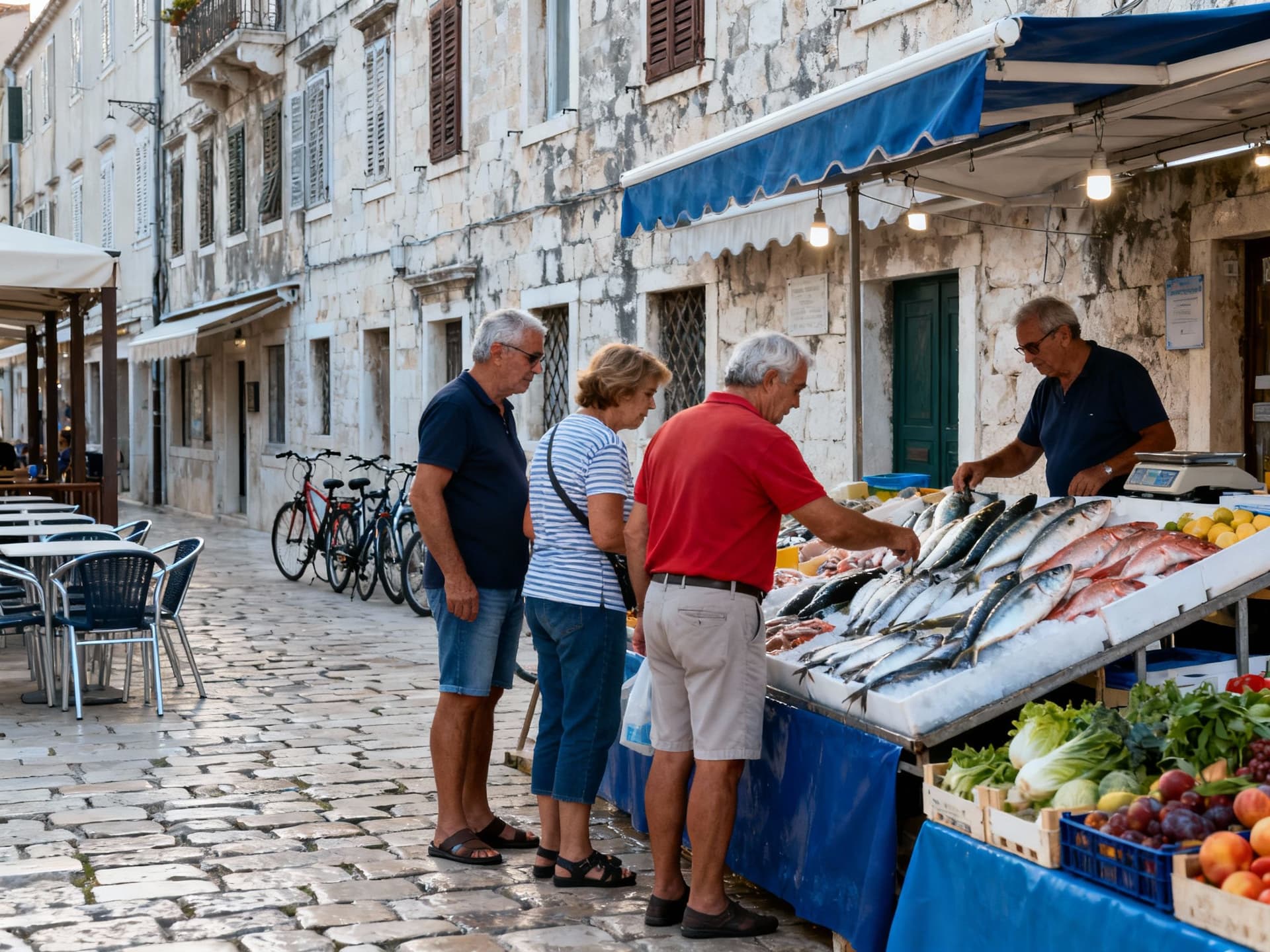When Coastal Hype Masks Inland Value in Croatia
Coastal headlines hide concentration risk. Use seasonality, HPI and policy data to stress‑test Croatian buys — pair a coastal lifestyle pick with inland cash‑flow to balance returns.
Imagine a Sunday market in Rovinj, the smell of fresh sardines on the grill, language rolling between Italian and Croatian — and a townhouse two streets back that earns reliable year‑round rent. For many international buyers Croatia reads as sun, yachts and headline coastal prices. The reality: seasonal peaks, shifting tax rules and uneven demand create concentrated risks — and opportunities inland that data now exposes.
Living Croatian Life — and Why it Matters to Returns

Croatia’s daily rhythm blends Mediterranean leisure and Central European structure: espresso at 8am in Zagreb’s Tkalčićeva, late coastal lunches in Split, and ferry timetables that govern island life. That variety shapes who rents, when, and for how much — critical for projecting rental yield and vacancy risk.
Signature neighbourhoods: coastal glamour vs inland steadiness
Dubrovnik’s Old Town, Split’s Diocletian quarter and Rovinj’s waterfront sell lifestyle and command premiums. But inland towns like Varaždin, Osijek and Karlovac offer lower price per m², steady local rental demand and fewer short‑let distortions — a different tenant profile and different risk exposure.
Food, seasons and market rhythm
High summer tourism (93.7 million nights in 2024) inflates short‑term revenue; off‑season months show lower demand and different tenant types. For an investor, understanding this seasonality converts romantic assumptions into cash‑flow scenarios backed by data. Seasonal strength increases revenue but also vacancy volatility and management costs.
Risk & Sensitivity: Where Croatia’s Headlines Hide Fragility

Policy and price moves matter. House price indices rose strongly through 2024, yet the government has signalled property tax reforms to discourage short‑lets and free up housing. That combination increases policy risk for coastal short‑let strategies and reduces the margin of safety unless you stress‑test revenue assumptions.
Three sensitivity scenarios every buyer should model
Build a base, downside and stress case for 10 years. Use local HPI trends (10% annual growth vs. 0–2% or a 10–20% correction) and revenue shifts (summer‑weighted STR to LTR conversion rates). The shape of your return changes radically if average occupancy drops 20% or municipal taxes are applied per m².
Bulletproof the math: key inputs to vary
Price per m² (local market), achievable rent (STR and LTR), occupancy, operating costs (management, utilities, repairs), effective tax rate and exit cap rate. Changing any single input by 10–20% identifies which assumptions your returns are most sensitive to.
Risk concentrations to watch in Croatia
- Coastal short‑let dependency; municipal tax changes by m²; concentrated tourist demand (same weeks every year); transport bottlenecks on islands; ageing building stock with renovation costs.
From Lifestyle to Ledger: Practical Steps with Local Data
You fell for the café light in Stari Grad — smart. Now translate it into numbers. Use local sources for comparable sales, short‑let platforms for realised nightly rates, and the Croatian statistical office for seasonality. Cross‑check agency claims with municipal registries and recent sales, not just marketing photos.
Property types & how they change risk profiles
Seafront apartments: high price per m², high STR revenue, high seasonality and management intensity. Inland townhouses or new blocks in Zagreb: lower purchase price, steadier long‑term tenancy, lower turnover. Renovations in stone houses carry hidden structural risk but can yield premium occupancy if marketed to long‑stay guests.
Six steps to quantify risk before offer
- 1) Pull HPI and tourism seasonality for the micro‑area; 2) Run STR realised rates for the past three years; 3) Model LTR fallback at 70–80% of STR‑implied income; 4) Add expected new tax per m² if relevant; 5) Stress vacancy and cap‑rate shifts; 6) Price in renovation and management contingency (10–20%).
Insider Knowledge: Local realities expats often misread
Expats underprice municipal rules: island mooring rights, coastal zoning, and municipal taxes differ and can add recurring costs. Many also underestimate the labour and regulation friction for short‑let management — local agencies can help, but compare multiple operator P&Ls.
Cultural friction that affects tenancy and resale
Multi‑generational living and demand for long leases among locals stabilise some inland markets, but coastal towns may prioritise tourist flows. That nuance influences tenant mix and the attractiveness of a buy‑to‑let strategy versus occasional personal use.
Tactical contrarian tip: Shore up yield by looking inland
- Target provincial county seats (Rijeka, Osijek, Varaždin) for higher gross long‑term yields, lower acquisition cost, and lower short‑let policy risk. Pair a modest coastal asset for capital appreciation with an inland cash‑flow positive asset to diversify seasonality risk.
Conclusion: Croatia sells a life, not just square metres. If you buy for lifestyle and rent for returns, split the mission: let data guide which streets suit summer glamour and which towns deliver steady cash flow. Stress‑test for taxation, occupancy swings and local rules — then make offers that survive a 20% revenue shock. Work with two specialists: one who knows the lifestyle market and one who runs the numbers.
Dutch investment strategist who built a practice assisting 200+ Dutch clients find Spanish assets, with emphasis on cap rates and due diligence.


